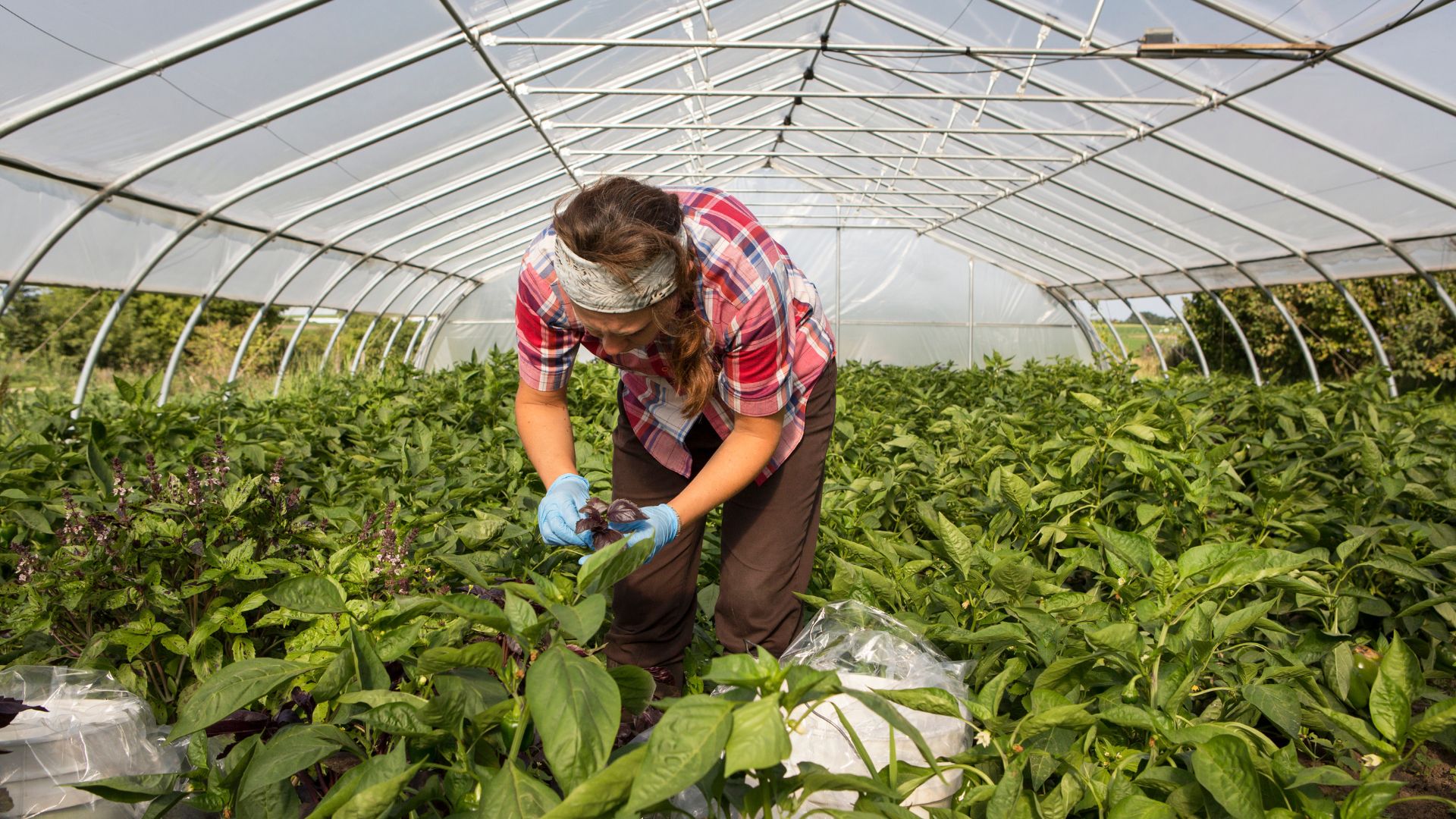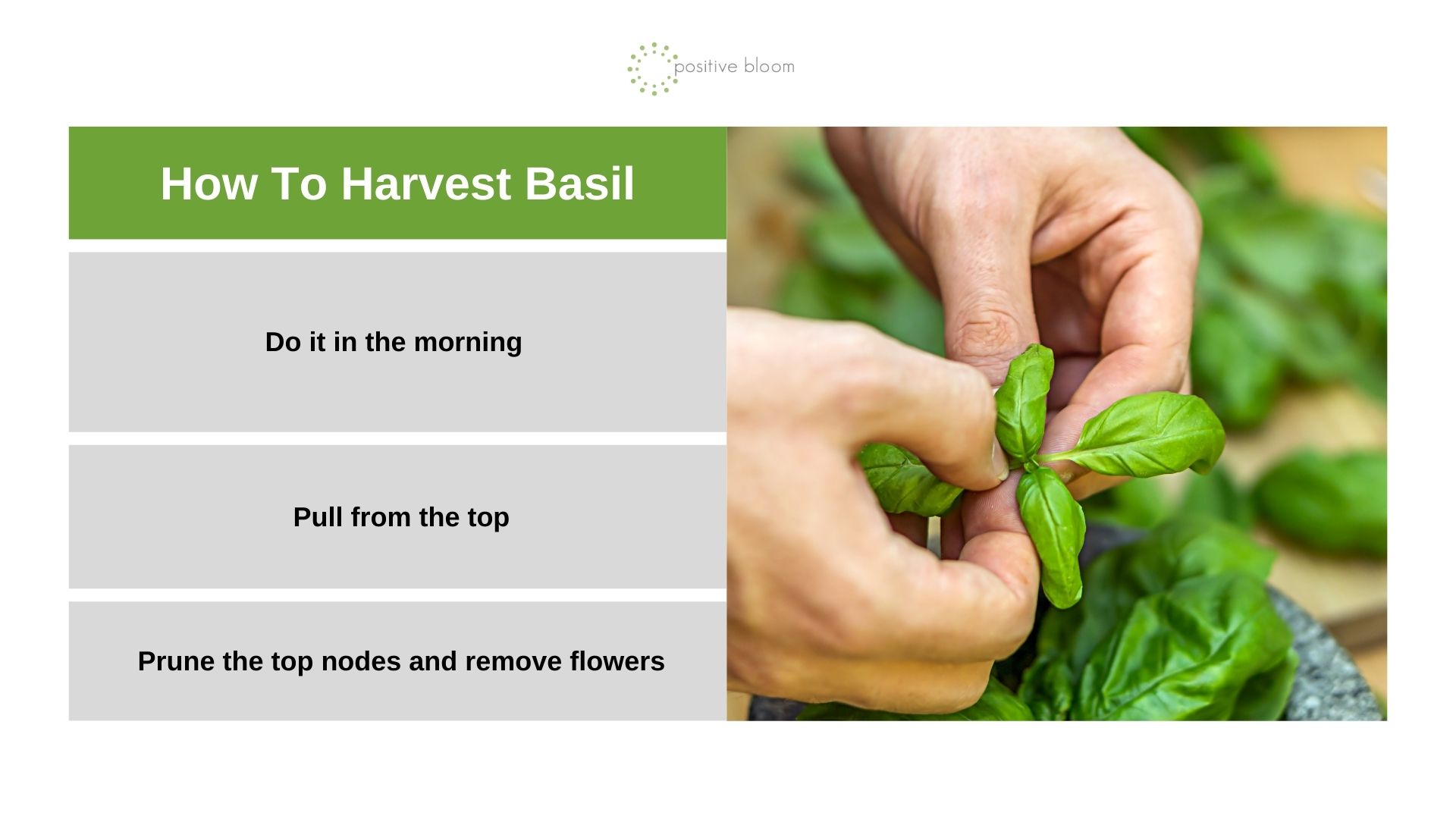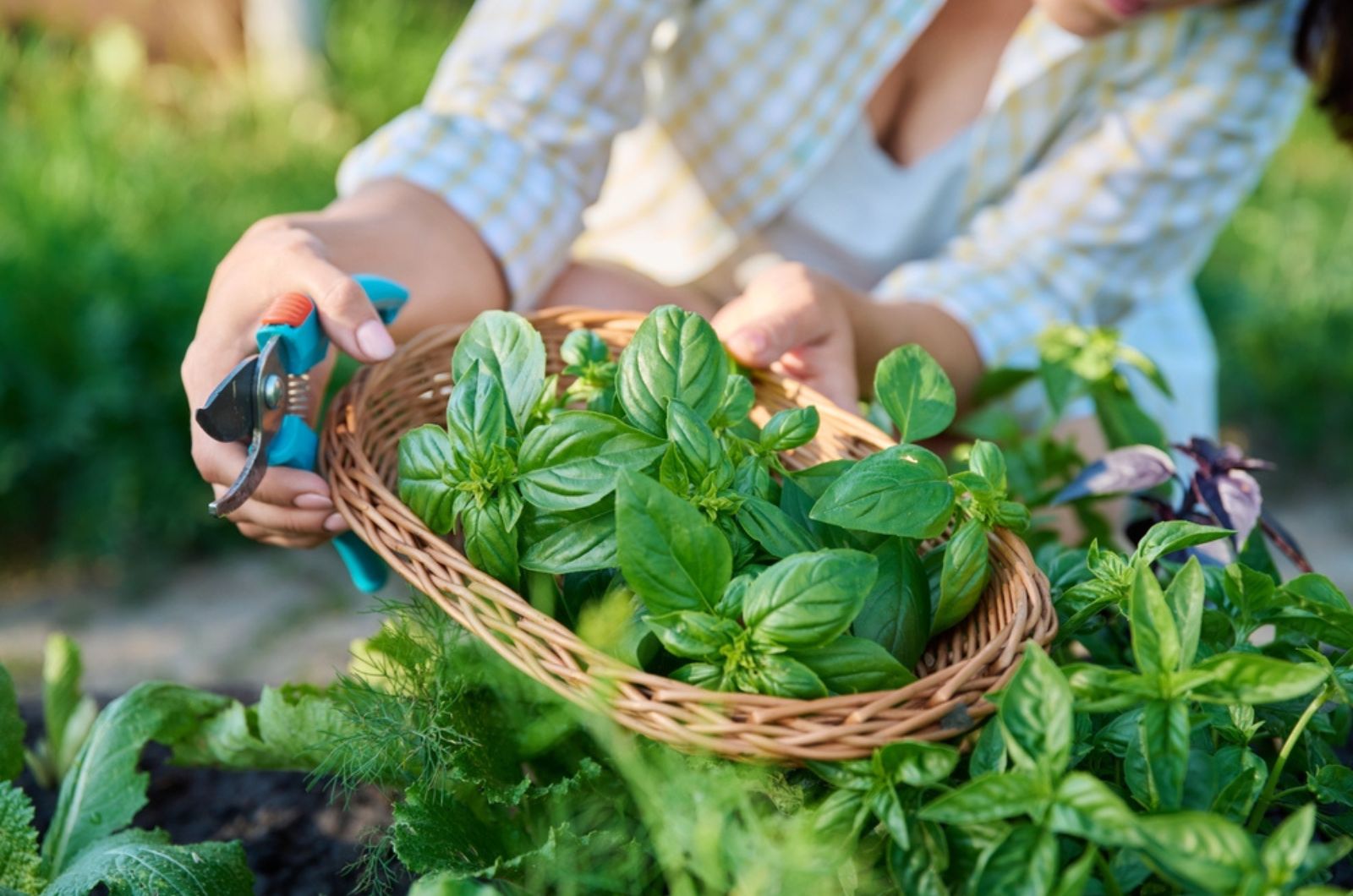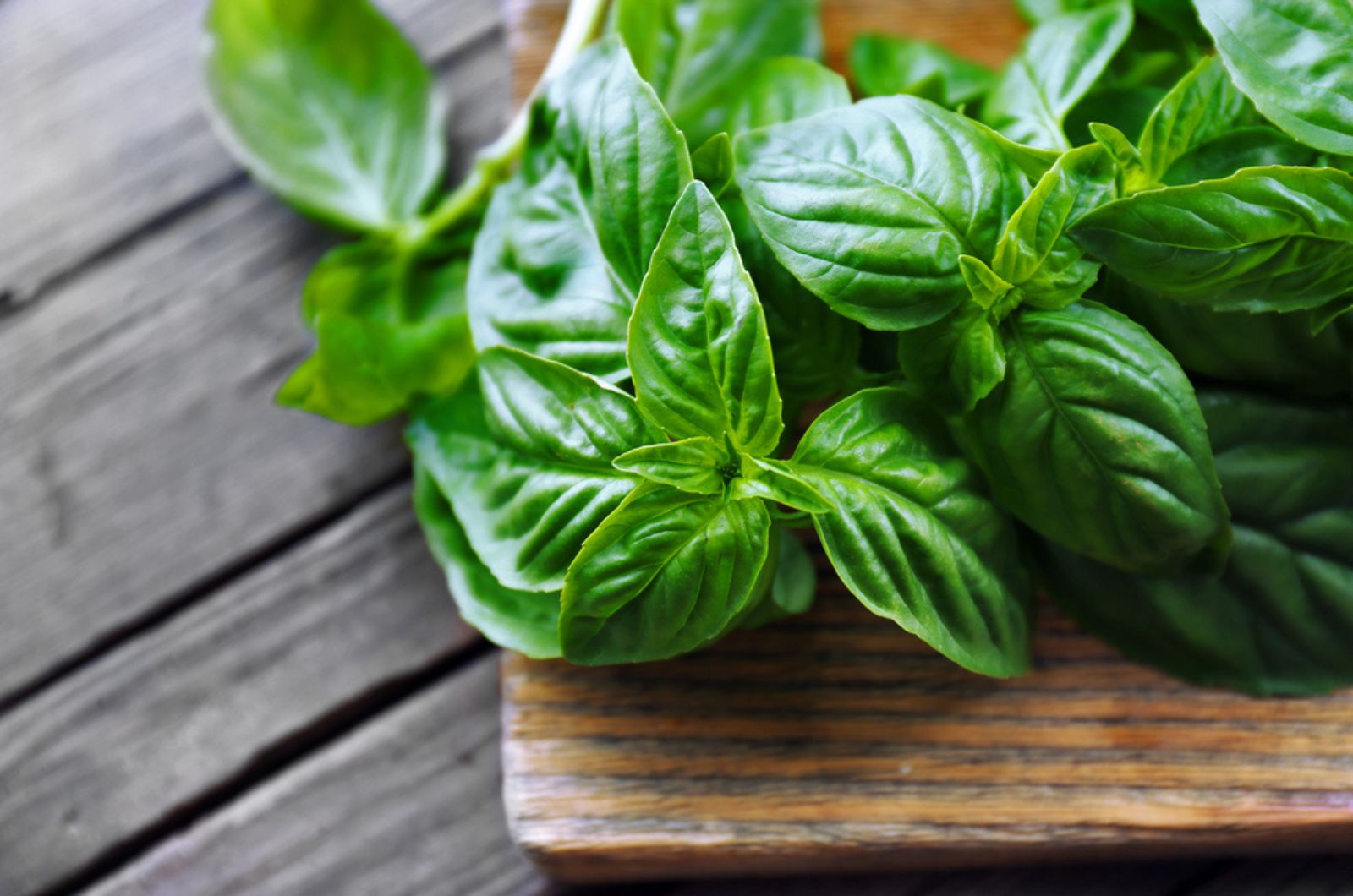Basil is one of those aromatics that you can grow all year long on your kitchen counter and have fresh herbs for your pizzas and pastas.
But did you know that if you don’t prune (or rather harvest) it regularly, it can bolt and stop producing more of its aromatic foliage?
And yet, if you do pick its leaves every once in a while, it will put on new growth and not grow flowers, giving you a more abundant harvest.
Collecting the leaves isn’t rocket science, but there are some tricks that will help you do it in the most efficient way possible, keeping your plant healthy and having it producing more than ever.
Here’s how!
When To Harvest Basil
The first thing you need to do is learn how to prune your basil plant. Start by removing the outer foliage once your plant gets about 6-8 inches tall. Or you can start collecting the leaves once your plant has grown at least 4 sets of true leaves.
If you grow your basil outdoors, know that this herb will start producing more and more leaves once the temperatures reach 80°F, which is a great time to start harvesting them.
Now, the best time of day to harvest basil leaves is morning because that’s when they’re the most plump and fresh, not having used all the moisture they need to survive the summer afternoons.
Also, don’t be afraid to harvest as much as possible because that will put your plant in the right mood for putting out more new growth. Although, do leave a couple of leaf sets so that it can photosynthesize and continue producing.
Therefore, pick more leaves than your current needs just to get the best out of your basil. You can always store the unused basil in a glass of water to keep it fresh or dry it.
If you keep your basil outdoors, make sure to harvest everything you can before the first frost. And if you grow it in a container, you can always move it indoors and place it in a window with plenty of sunlight to keep it producing more aromatic foliage all year long.
The Right Way To Collect The Leaves
There isn’t a wrong way to harvest herbs, but there are ways that will get the most out of your plants and keep them healthy so that they can produce as much as possible.
When it comes to basil, you have two options: leaf and stem harvest.
If you only need a small amount of basil for your dish, you can harvest just a couple of leaves. And if you want a larger amount of basil either for making a delicious tomato sauce or for any other reason, then you should harvest full stems.
Here are some tips that can help you with both types of harvest:
• When harvesting leaves, pluck them right at the place where they meet the stem (don’t break them in half or leave the petioles hanging).
• Start collecting the topmost leaves first so that your plant remains full and lush. Harvesting the bottommost foliage first will leave your plant looking bald and sad.
• If you’re harvesting stems, use a pair of clean pruners or scissors to cut them top down and make sure to make incisions about a quarter of an inch above the node.
• Remove flowers as they appear so that your basil can divert all its energy into producing more aromatic leaves.
• Prune no more than about a third of the entire plant in one sitting to allow your basil to recover and put on more new growth.
How To Store Harvested Basil
If you decide to harvest more leaves than you actually need, you can store the extras until the next chance for using them arises.
It’s best to use the stem-harvesting method for this purpose. Place the stems in a jar filled with water (but don’t make the leaves touch or they may rot) and keep it at room temperature.
Stored this way, your basil will remain fresh for another 4-5 days at least, giving you plenty of time to think of another recipe that could use a leaf or two.
Avoid storing this plant in the fridge because it will turn brown if you expose it to cold temperatures for a long time.
You can also dry your basil or get extra creative with its storage. Chop it up and place it in an ice tray, then cover it with olive oil. Freeze it afterwards and throw 1-2 ice cubes into a pan whenever you’re making a dish that calls for this herb.




